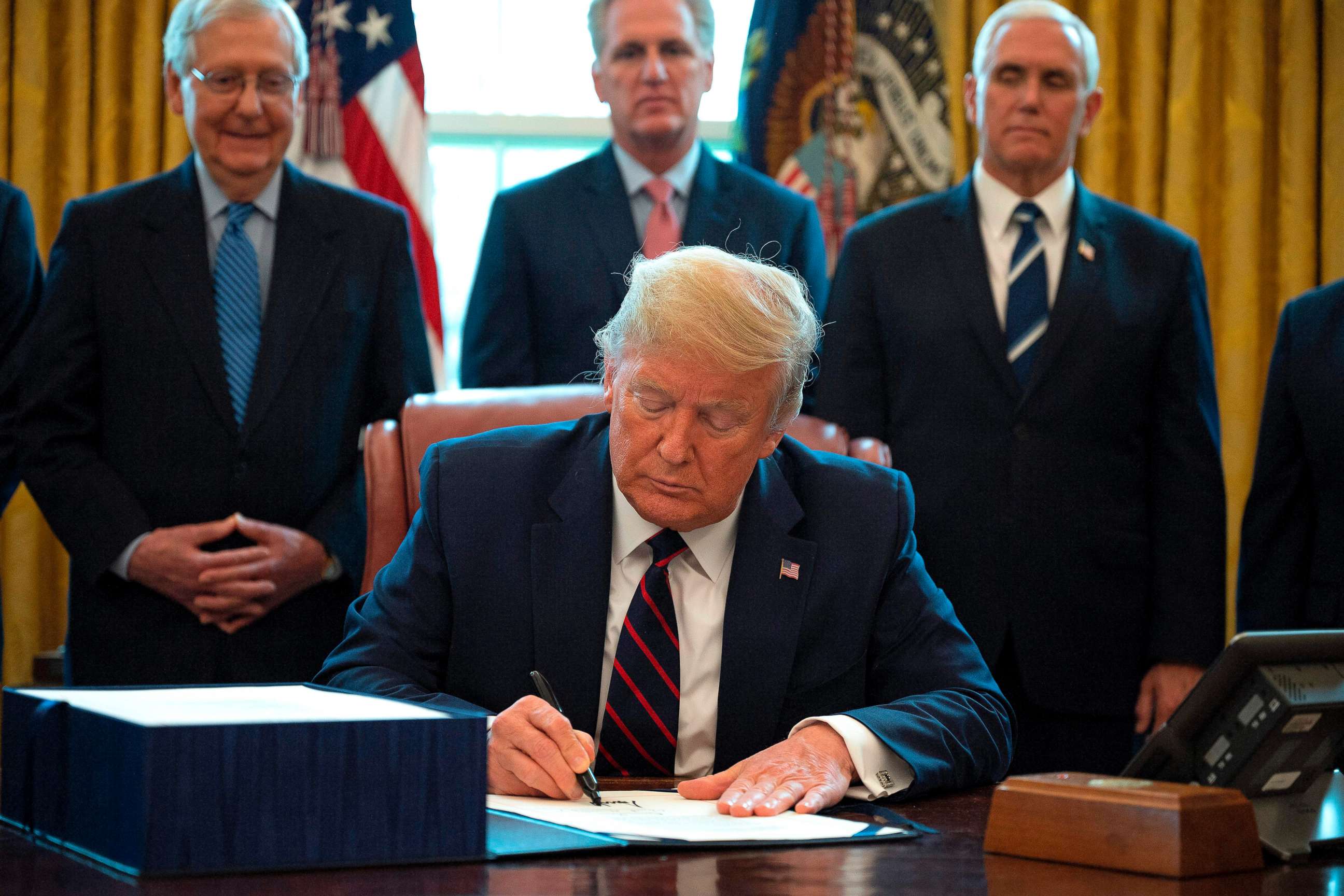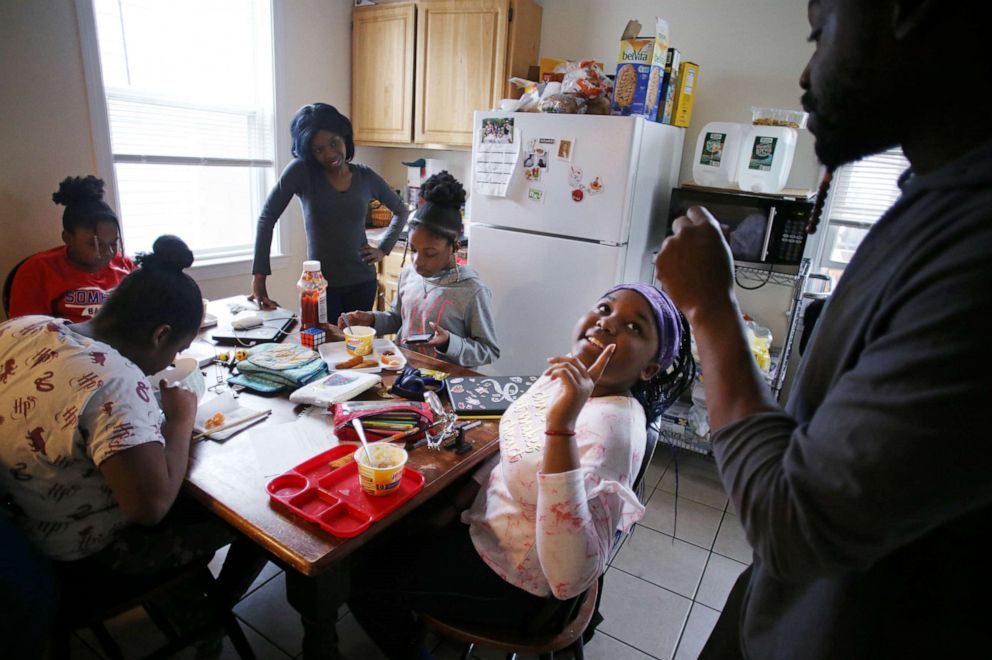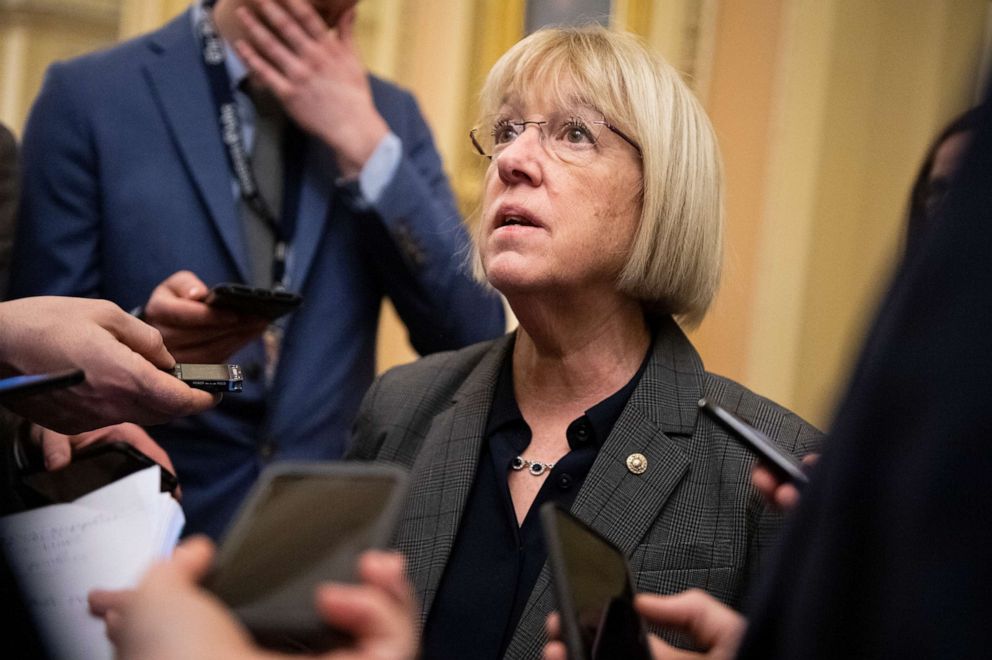Coronavirus stimulus triggers fight over paid leave
The vast majority of small business could exempt themselves from the leave law.
The Trump administration and Democrats remain at odds over who should qualify for paid leave amid the coronavirus pandemic with the administration issuing guidance this week that gives companies broad authority to determine which employees get the benefits.
Under the Families First Coronavirus Response Act, known as “phase three” of the recent stimulus package, organizations with more than 500 workers are already exempt from the paid leave mandates. That leaves up to 61 million workers who could be eligible, according to the Labor Department.
However, the vast majority of those businesses can apply for an exemption because they have fewer than 50 people, according to Census Bureau data.
Moreover, some Democrats remain concerned that this could shortchange employees even if their company isn’t categorically exempted from the new paid leave requirements.

“Thanks to Republican opposition, the steps we’ve taken on paid leave are inadequate in light of the crisis, and now, the Trump Administration is twisting the law to allow employers to shirk their responsibility and is significantly narrowing which workers are eligible for paid leave,” Democratic Senator Patty Murray said in a statement Wednesday.
Both sides face mounting urgency with nearly 10 million Americans filing unemployment claims in the past two weeks.
The new law mandates up to 12 weeks of leave for those who qualify. Employees can request two weeks of paid leave if they’re unable to work because they’re sick and an additional 10 weeks at a reduced pay rate to care for their child if they’re forced to quarantine.
“The legislation will enable employers to keep their workers on their payrolls, while at the same time ensuring that workers are not forced to choose between their paychecks and the public health measures needed to combat the virus,” the Labor Department said in a statement.
The second phase of the stimulus bill package focused on helping businesses maintain their payrolls. But the new “families first” act doesn’t prohibit companies from firing or furloughing employees and making them ineligible for leave.
“This is true even if the employer closes the worksite for a short time and later reopens,” said Katrina Grider, a legal analyst and attorney certified in employment law. “Employees would be entitled to paid sick leave or expanded family and medical leave only when the worksite reopened and there was work available.”

The paid leave stimulus bill was signed into law the day before California issued the nation’s first stay at home order. As a result, questions remain about what an employer is required to offer even if they decide to shutter some work places.
“Things have been moving so fast it’s difficult for congress to legislate to the current situation,” said Scott Witlin, an attorney who specializes in employment and labor law at Barnes & Thornburg.
Witlin said his firm created their own forms for his clients to submit to the Department of Labor to prove a company qualifies for the tax credit reimbursements that come with providing paid leave. It’s one example of new steps employers must take to certify employees qualify for leave.

Democrats contend the process outlined by the Labor Department for verifying whether employees are truly impacted by COVID-19 gives companies too much power to decide which of their employees might qualify.
“I think it’s very difficult to write something that’s going to cover all circumstances,” said Michael Lotito, a leading expert on workplace policy and employment law.
“It’s not unusual in employment law for there to be individualized assessments,” Lotito added.
Under normal circumstances, Lotito said, implementing complex policy like the family leave law could have taken even longer than the current expiration date for the stimulus package, which is set for the end of the year.
“The amount that we’re trying to digest in the period of two weeks is unbelievable,” Lotito said.




